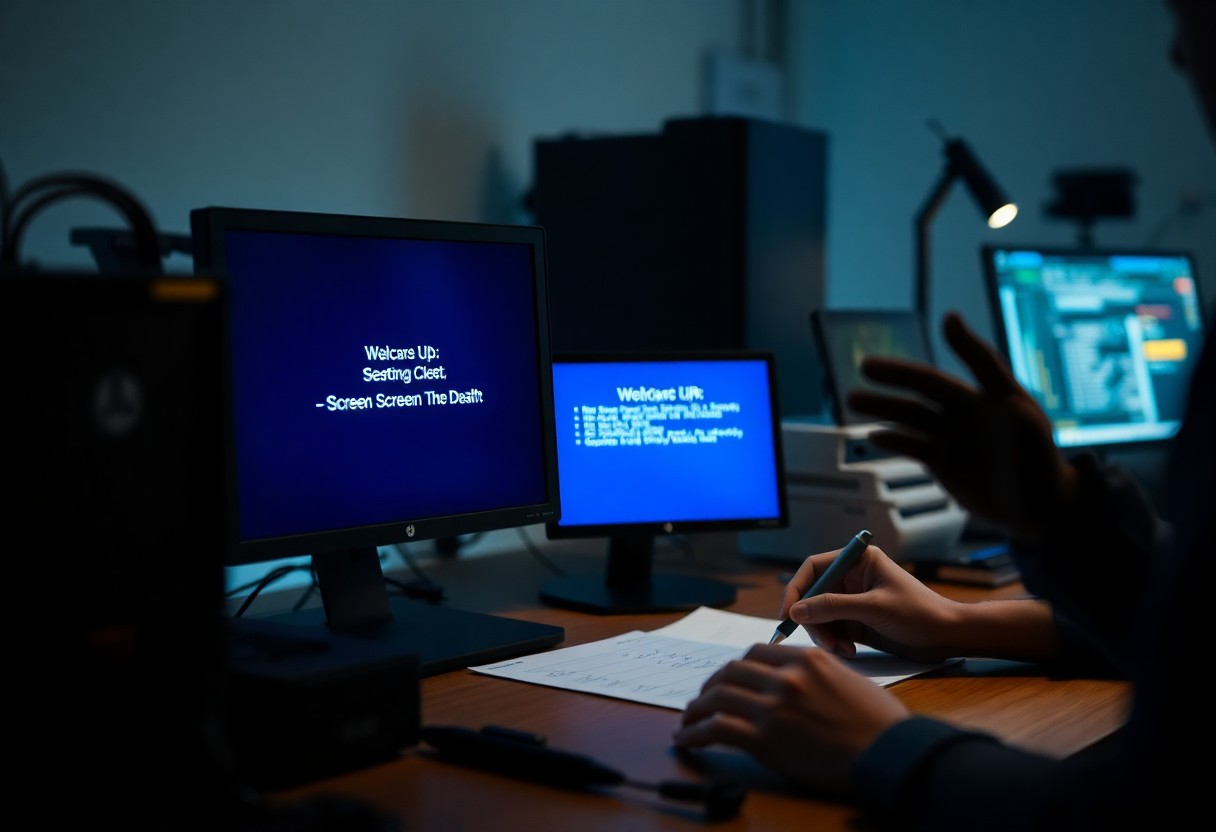Most computer users encounter the dreaded Blue Screen of Death (BSOD) at some point, and when it happens, it can be overwhelming. This guide will equip you with a comprehensive troubleshooting checklist to help you diagnose and resolve the issues causing this disruptive error. By following the steps outlined here, you can take control of your system’s stability and get back to your work or entertainment with confidence.
Understanding the Blue Screen of Death
Before you can effectively troubleshoot the Blue Screen of Death (BSOD), it’s vital to understand what it is. The BSOD is an error screen displayed on Windows operating systems, indicating a severe system error that prevents your computer from functioning properly. This protective measure aims to prevent further damage to the system by halting all operations, allowing you to address the underlying issues.
Common Causes of BSOD
Among the most common causes of BSOD are hardware failures, incompatible drivers, and software bugs. Faulty RAM, overheating components, or a damaged hard drive can trigger these errors. Additionally, improper driver installations or system updates may lead to conflicts, resulting in a BSOD.
How BSOD Occurs
To understand how a BSOD occurs, it’s important to recognize that it typically arises from critical system errors that the operating system cannot recover from. When your computer encounters a problem it can’t resolve, it triggers the BSOD as a safety measure.
But it’s not just random; BSODs occur when the kernel, which is the core component of the Windows operating system, crashes. This can happen due to a variety of issues, such as faulty hardware, corrupt system files, or conflicts between software and drivers. Essentially, when a vital function fails, the system generates the BSOD to alert you of the problem and to prevent potential data loss or hardware damage.
Initial Troubleshooting Steps
Assuming you’ve encountered the Blue Screen of Death (BSOD), initiating the troubleshooting process promptly is vital. Start by gathering basic information about the error message displayed. Your first goal is to identify whether this is a recurring issue or a one-off incident, as this can significantly influence your next steps for resolution.
Rebooting the System
Below, you’ll find that simply rebooting your system can clear temporary glitches. This straightforward step can often resolve the BSOD if it was triggered by a minor software conflict or temporary hardware malfunction. If the issue persists after rebooting, then it’s time to dive deeper into other troubleshooting methods.
Disconnecting External Devices
External devices connected to your system can sometimes cause conflicts that lead to a BSOD. By disconnecting all non-imperative external devices such as USB drives, external hard disks, and printers before restarting your computer, you can isolate potential hardware issues. This process helps rule out these devices as the cause of the problem.
Also, if you continue to face BSOD after disconnecting these devices, try reconnecting them one at a time. This way, you can pinpoint the specific device causing the conflict. Additionally, check each device’s drivers and ensure they are updated, as outdated drivers can contribute to system errors and crashes.
Checking Hardware Components
While troubleshooting the Blue Screen of Death (BSOD), it’s important to examine your hardware components. Faulty hardware can often lead to system crashes, and assessing the integrity of devices like RAM, hard drives, and connections can help identify the root cause of the issue. Make sure that all components are securely seated in their slots and consider running diagnostics to check for potential failures.
Inspecting RAM and Hard Drives
Any problems with your RAM or hard drives can lead to significant system instability. Start by checking for loose connections and ensure that your RAM sticks are properly seated. It may be beneficial to run memory diagnostic tools and hard drive health check utilities to pinpoint issues, as both are common culprits behind BSOD events.
Overheating Issues
Issues with overheating can lead to hardware malfunctions and subsequent BSOD occurrences. It’s vital to monitor your system’s temperatures, especially if you notice unexpected crashes. Make sure that vents are clear, fans are operational, and thermal paste on your processor is in good condition to facilitate efficient heat dissipation.
The thermal management of your computer plays an important role in its overall function. Excessive heat can cause components like the CPU and GPU to throttle down performance or shut down entirely to prevent damage. Check your system’s internal temperatures using software tools, and ensure that airflow is not obstructed, as maintaining a cooler environment can prevent future BSOD incidents linked to overheating.

Updating Drivers and Software
After experiencing a Blue Screen of Death (BSOD), checking for updated drivers and software should be one of your first steps. Outdated or incompatible drivers can lead to system instability and crashes. Regularly updating your drivers and software ensures that your hardware works efficiently with the latest improvements, reducing the risk of encountering BSOD errors.
Importance of Up-to-Date Drivers
Along with enhancing performance, up-to-date drivers provide better compatibility with new applications and hardware. When manufacturers release updates, they often address bugs and vulnerabilities, which can prevent your system from crashing. Keeping your drivers current significantly minimizes the chance of experiencing a BSOD.
Operating System Updates
UptoDate operating system updates are necessary for maintaining system stability and security. These updates often include patches that fix existing problems, support new hardware, and improve overall performance. By regularly installing these updates, you help ensure your operating system functions well, reducing the potential for errors that lead to a BSOD.
For instance, regularly installing Windows updates can enhance system security and address known issues that may contribute to system crashes. Neglecting these updates may leave your system vulnerable to malware and software bugs that could trigger a BSOD. In addition, you could miss out on performance enhancements that optimize your computer’s functionality, resulting in a smoother user experience.
Running Diagnostic Tools
Your next step in troubleshooting the Blue Screen of Death (BSOD) is to run diagnostic tools. These tools can help you identify underlying hardware or software issues causing the system crash. By using the right diagnostic utilities, you can pinpoint the problem and take appropriate actions to resolve it effectively.
Built-in Windows Troubleshooters
Builtin Windows troubleshooters are handy tools designed to automatically detect and fix common issues on your computer. You can access these troubleshooters through the Settings app under ‘Update & Security,’ where they can assist you in diagnosing problems related to hardware and software that may lead to BSOD errors.
Third-Party Diagnostic Software
Among the options available for diagnosing your system, third-party diagnostic software can provide more in-depth analysis and tools compared to built-in solutions. These programs often include features that can analyze system temperatures, memory integrity, and hard drive health, offering a comprehensive look at your computer’s performance.
This software can help you identify specific hardware failures or conflicts that might not be evident with Windows troubleshooters alone. Many reputable options come with user-friendly interfaces that guide you through scanning your system and assessing its condition. By leveraging these tools, you can gain additional insights into potential issues that may lead to BSOD, allowing you to take targeted corrective actions.
Advanced Troubleshooting Techniques
All advanced techniques for resolving the Blue Screen of Death (BSOD) can help you identify underlying issues. Consider these steps as part of your troubleshooting process:
- Check for hardware conflicts.
- Update device drivers.
- Run diagnostic tools.
- Analyze memory dump files.
| Advanced Techniques | Description |
|---|---|
| Check for hardware conflicts | Ensure all hardware is correctly installed and functioning. |
| Update device drivers | Keep drivers up-to-date to avoid incompatibility issues. |
| Run diagnostic tools | Utilize built-in or third-party tools for analysis. |
| Analyze memory dump files | Investigate files to determine the cause of the BSOD. |
System Restore
To revert your system to a previous state, use System Restore. This feature allows you to undo changes that may have caused the BSOD without affecting your personal files, providing a safe way to troubleshoot software issues.
Windows Safe Mode
At times, booting your computer in Windows Safe Mode can help you diagnose and fix problems more easily. This mode starts your system with a minimal set of drivers and services, isolating issues that may cause BSOD.
System Safe Mode is particularly beneficial when you suspect third-party software or new drivers could be causing conflicts. By limiting the number of processes, you can effectively pinpoint the origin of the problem, making it easier to take corrective action. It’s an vital tool for troubleshooting and can often save you time and frustration in resolving BSOD errors.
Summing up
On the whole, troubleshooting the Blue Screen of Death (BSOD) can seem daunting, but by following this checklist, you can systematically identify and resolve the underlying issues. Start by updating your drivers and checking for hardware problems, as these are often the root causes. Regular system scans and keeping your software up to date can help prevent future occurrences. By taking these proactive steps, you can restore stability to your system and improve your overall computing experience.



